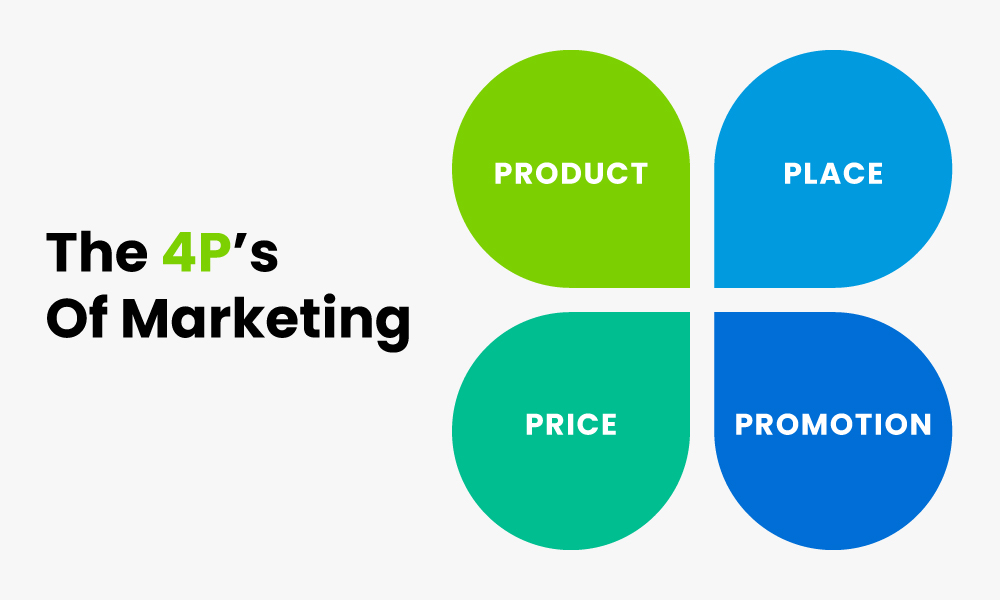Beginner’s Marketing Strategy: Everything You Need To Develop Your Own Today

Creating a marketing strategy is all about distinguishing your brand from competitors and increasing customer awareness of the benefits your company can deliver.
An effective marketing strategy, on the other hand, necessitates extensive strategic planning and data analysis.
If you are just starting a business and are unfamiliar with marketing strategy, we can walk you through the basics.
Importance Of Marketing Strategy
It is critical to stay ahead of the curve in the fast-changing marketing industry if you want to thrive and remain relevant with your audience.
Choosing the right marketing plan for your company will bring various advantages, including:
-
Giving your company an advantage over the competition.
-
Assisting in the development of the most profitable items and services.
-
Assisting a company in making the most of its resources to send a sales message to its target market.
-
It's highly scalable, which means it can adapt to and expand with your company.
-
It is also repeatable to test different scenarios and get the best results while offering future case studies and statistics.
A strong and optimal marketing strategy will comprise the following components:
-
Organises your team around a set of goals.
-
Assists you in connecting your efforts to the aims of your firm.
-
Allows you to determine and test what connects with your audience.
The 4P’s Of Marketing

We’ll start with the basic foundational principle of marketing - The 4Ps of marketing. These are used to assist brands in developing the marketing mix, which is utilised to optimise customer engagement.
Understanding and implementing the 4Ps is critical for any fundamental marketing strategy.
The first is the price, which is how much the product costs. Pricing a product correctly is critical to the success of your company because varying pricing creates varied views of the product's value.
Businesses, for example, must consider if they want to sell their product as a luxury or budget item and price it accordingly.
The product, which is what you are delivering to your clients, whether it is a product or a service, comes next. To be embraced by your target market, your product must satisfy a niche or meet demand within that market.

As a result, when marketing your product, it is critical to base your strategy on what sets your product or service apart from the competition.
You essentially want to answer the question, "Why us and not them?"
The third "P" stands for Place, which is where the product is sold, such as online through an e-commerce site or in a physical store.
Your marketing strategy is also determined by where you sell your product. If you run an e-commerce website, for example, digital marketing initiatives that bring customers to your website, such as an email marketing campaign, would be very logical.
The last "P" is promotion, which refers to how you intend to advertise your product or service. This is the component of your marketing plan that involves advertising, public reactions, and content creation.
Building Your Brand

Branding is an essential component of any marketing plan because it ties the consumer with your product or service and helps retain top-of-mind awareness.
There are numerous parts to building a brand, but we will focus on the two most crucial in this article: defining a brand personality and creating a brand book.
Defining a brand personality is essentially creating a tone for your brand's messaging. This tone should be maintained throughout your marketing efforts and serve as the foundation for how you communicate with your target audience.
Many marketers define brand personality as giving human characteristics to your brand to distinguish it and help customers remember it.
Consider who your target audience is and what tone will best resonate with them when deciding which brand personality to engage.
Here are some common examples of brand personality:
-
Sophisticated
-
Thrilling
-
Sincere
-
Toughness
Second, to create a consistent brand, you will need a brand book that specifies branding criteria such as colours and typefaces, as well as information about the target market and brand personality.
A brand book is very beneficial for beginners and those who are building their first marketing strategy because it covers all of the crucial branding information that all members of the organisation must be aware of.
The following are some of the most important contents of the brand book:
-
The purpose and vision statements of your organisation.
-
Copywriting and marketing keywords and phrases.
-
Logos, colours, and fonts.
-
Mood boards with your competitors and other brands you want to copy.
Can Data Develop Marketing Strategies?

Marketers now have the technology to obtain critical information about their customers and target markets via social media and search engine data.
Although data and privacy rules appear to be altered, data plays a significant part in developing a successful and powerful marketing plan.
So, how do marketers design a marketing strategy using data?
There are several techniques to segment your market.
Demographic data gathered from social media and other internet sources can be utilised to target certain groups of the population.

Market segmentation is an important aspect of marketing strategy since it allows you to divide your audience into categories that allow for customised messaging and promotional efforts.
-
First, demographic data such as age and gender are used.
-
Second, use psychographics to determine what your target market values.
-
Third, you may divide your market based on behavioural traits such as purchasing decisions.
-
Finally, they are classified geographically, or according to their location.
Marketers can easily segment an audience based on any of the above factors using the data at their disposal.
Furthermore, data enables marketers to assess the success of their initiatives. It is critical to try a variety of tactics and variations of your promotional messages and marketing material while building a marketing plan.
Data allows you to better understand what works and what doesn't, allowing you to adjust your plan accordingly.
Putting It All Together

All that we’ve covered so far has just been the basic foundation of our marketing strategy guide today. We will now be going into more detail with the specifics of what steps are necessary for a marketing strategy.
➀ Documentation
To begin, document everything you learn and do so that all of your organization's marketers, agencies, executives, and other stakeholders understand the following:
-
Who do you intend to target?
-
What are your goals?
-
How to Set Yourself Apart from the Competition
-
How to Reach Your Target Audience
-
What will determine your success?
Documenting your content strategy is essential to the success of your content marketing activities.
Goal-setting is frequently the difference between success and failure. Writing (or typing) your goals is said to help them become more ingrained in your brain.
Marketers who are organised are 674% more likely to report success. Yes, that’s 674%. You did not read that wrong nor is there a typo. We repeat. That’s 674% more successful.
➁ Understanding
✲ Investigate Customer Pain Points and Expectations
Marketing that is effective targets a certain audience. Knowing who those people are can assist you in selling more efficiently.
With enough research and analysis, you can define your target demographic and plan marketing appropriately.
✲ Recognize Market Trends
While understanding your target will only get you so far, recognising market trends will keep you on track. Identifying and understanding current industry trends allows you to enhance yourself and stay ahead of the competition.
✲ Recognize Your Competition and Your Unique Selling Proposition
-
Competitive analysis is the process of determining your competitors' strengths and shortcomings to gain a better understanding of how to operate your business and attract new audiences. Conducting a competitive analysis is crucial for defining how your entire firm will be run.
-
The SWOT analysis of a corporation relates to its strengths, weaknesses, opportunities, and threats. It might help you figure out what sets you apart from your competition and what resources you have to capitalise on that opportunity. Incidentally, we have an article on competition analysis that you can read here.
✲ Create Buyer Personas
Your marketing persona is a document that contains information about your target audience's who, what, when, where, and why, as well as general demographic data such as gender, job title, job function, business size, team size, requirements, pain points, and obstacles. Speaking of Buyer Personas, if you haven’t read up on that topic just yet, we have that article as well which you can find here.

➂ Unique Selling Proposition
✲ Determine Your Brand's Value and Offering
While your logo, products, website, and even digital marketing efforts may change, your brand values must remain constant. Your essential brand values are the principles around which your company was founded.
They serve as a guidepost for your brand's story, actions, behaviours, and decision-making process.
✲ Define Your Individual Brand Voice
Your Brand's Voice will be the personality and emotion injected into a company's communication. It includes everything from the words and language you use to the personality and image created by your marketing materials.
Above all, you have to ensure that your message is heard above the noise and leaves a lasting impression on potential customers.
✲ Make Your Own Creative Visual Identity
The design of your company is its unsung hero. The visual aspect of your brand can now, more than ever, make or break your business.
Visual identity is not limited to major enterprises; small, direct-to-consumer businesses can also create one at a low cost. Even if you are just getting started, we strongly advise you to build a good visual identity.
✲ Record Your Brand Positioning and Messaging
Brand positioning defines how people perceive your goods, whereas messaging serves as a channel for enhancing that notion. They define your company's market position and, ultimately, influence its long-term success.
➃ Goals & Objectives

✲ What Are Marketing Objectives
Your marketing target is a specific, quantifiable, aspirational, reasonable, and time-bound number that drives all of your marketing operations.
Marketers that outline their goals and objectives are more likely to achieve them.
✲ What Are Marketing Goals
Marketing objectives are measurable goals that specify the intended consequence of your marketing strategy. Their primary goal is to steer your marketing efforts toward specific goals.
✲ Record your SMART objectives
Your marketing objectives must be SMART (Specified, Measurable, Attainable, Realistic, and Time-bound). The SMART strategy helps a manager to successfully manage marketing operations and forecast the success of new goals. Side note, if this sounds familiar, that’s because you’ve read our Business Development article which you can refresh your memory with here.
➄ Marketing Approaches & Media
✲ Recognise Your Marketing Funnel
The marketing funnel is a diagram of a funnel that displays how clients go through the customer journey.

✲ Establish Your Marketing Channels
A marketing channel is any approach or platform used to advertise a product or service to clients. The primary goal is to transfer ownership of a product or service from the maker to the consumer.
✲ Select Your Marketing Strategies
Marketing techniques are the acts taken to promote a product or service to meet specific marketing objectives.
A case study is one type of marketing strategy. Blog posts, white papers, and videos are examples of content that might be used to implement that marketing strategy.
➅ Execution & Publication
✲ Calendar of Marketing Events
A marketing calendar is a tool for planning and organising all of your marketing initiatives in one place. It acts as a guide for all of your marketing initiatives.

✲ Marketing Implementation
Marketing execution is the process by which your marketing strategy becomes a reality. You are well aware that a marketing strategy acts as a road map for selecting, prioritising, planning, and finally executing tasks that will ultimately help your company's bottom line.
➆ Analysing Results
✲ Examine Your Media
A marketing metric is a quantifiable metric used to track the success of a marketing effort.
They are critical to the success of your entire organisation. Without them, determining the precise impact of marketing on a corporation is difficult.
Quick Marketing Strategies
So, by this point, you should have some idea of how to go about coming up with your marketing strategy. If you do not, here are some aspects of marketing that you can glean inspiration from.
✦ Pre-Launch Giveaways
To get a product off to a fast start, you must build anticipation and excitement about its release weeks or even months in advance.
Pre-launch giveaways and contests are one of the most popular ways to accomplish this. Give your goods away to a select set of lucky individuals in exchange for their assistance in spreading the word. Instagram contests, creating a hashtag challenge on social media, freebies, and more choices are available.
Whatever choice you select, attempt to think of material or ideas that will help your product become viral. For example, you could urge users to share their participation on social media or create a fun TikTok challenge. Be inventive in your communications to avoid being perceived as spam, and reward users who suggest your product to their friends with extra points.
✦ Increase Organic Visibility
A well-positioned website on search engines provides you with a consistent stream of traffic to promote your new product. To make your search engine optimization plan succeed, you must provide users with relevant information. Concentrate on the following three areas:
-
Keywords: Consider how a new user might search for your product rather than what you would call it or describe it.
-
Meta descriptions: Because meta descriptions are the summary of your web page on search engines, they must be brief and appealing. But be cautious! Google occasionally disregards this description and displays the first lines of text on your page, so be sure that is correct as well.
-
The first paragraph of the text: The idea is to ensure that readers know and grasp what your product is in as little time as possible.
✦ Shareable Content
Consistent content creation is one of the most dependable digital marketing techniques, particularly in the medium to long term.
Spend time developing a high-quality blog about your company or a related topic that customers will be interested in reading about. The idea is to attract consumers to share your content, resulting in consistent traffic to your website.

✦ Remarketing
Users are guided through the conversion funnel by a well-rounded marketing approach.
Consumers are at various stages of the purchasing process and may not be ready to buy from you the first time they hear about your goods. However, this does not imply they are no longer potential clients! You can nurture them over time by employing various remarketing strategies.
Regular followers can also benefit from remarketing. Maintain contact with your most loyal consumers (through a newsletter, for example), and don't forget to inform them of your debut.
✦ Referrals
Word of mouth is still an extremely effective approach to spreading the word about new products or services. Users instinctively discuss the items they use and promote with their friends. You can also give them a gentle shove to get things moving. How? By establishing a reward system for suggestions.
Everyone enjoys receiving freebies, so simply provide a discount coupon or free shipping in exchange for them telling their friends. This is a common strategy employed by companies such as Airbnb and Uber.
✦ Website Speeds

This is a simple yet effective trick: make sure your website is running at maximum speed.
Nothing is more infuriating than a website that takes forever to load. A website that is speedy and fluid increases user experience and brand perception.
There are various things you can do to enhance the loading times of your website, but many of them need coding skills, so we recommend consulting with a professional. Meanwhile, a quick cure could be to ensure that your photographs are of great quality while also being little in size. The larger the image file size, the slower your website will run.
✦ Influencers
Influencers are the social media marketing kings and queens. They have a loyal audience that follows their advice because they have branded themselves as experts in a specific field or sector. Consider influencer marketing to be the digital equivalent of word-of-mouth marketing.
The most typical technique for getting bloggers and influencers to talk about your brand is to hold events and send out free samples. Keep in mind, however, that you cannot buy their opinion or advice. Take the effort to research which influencers would be most interested in your goods.
✦ Customer Service

Customers are accustomed to receiving responses from businesses 24 hours a day, seven days a week, so make sure you have a trustworthy system in place for them to contact you whenever they need to.
Customer service is one of the most crucial areas for cautious staff selection. To provide your client with the experience they deserve, your company's ambassadors should be patient and sensitive.
✦ FAQs
When you release a new product or service, people are bound to have questions about how it works and what they can do with it. The more inventive it is, the more you will be required to explain it. Our advice is to get as much done and prepared ahead of time as possible by building a comprehensive and easily accessible "Frequently Asked Questions" section. Encourage users to visit it first before contacting you with questions.
You may also incorporate FAQs in your social post to anticipate new customer questions and demonstrate how your product works.
✦ Emails
The first step in properly implementing an email marketing plan is to develop a database with your clients. The more details you have on each of them, the better. Consider their age, location, whether they have children, and, of course, previous purchases or products they have expressed interest in.
Use this data to develop a highly tailored messaging approach. Make the user feel as if the emails were written specifically for them. Marketing automation can be of great assistance in successfully handling all of this data.
Closing Words
Creating a marketing plan has many elements and necessitates attention to detail as well as a data-driven approach. Your marketing activities will direct customers to your brand and keep them loyal.
Finally, keep in mind that the purpose of any marketing is to drive lucrative customer action. The more efficiently you market your company and products, the greater the returns and the bigger the customer base you will see over time.

